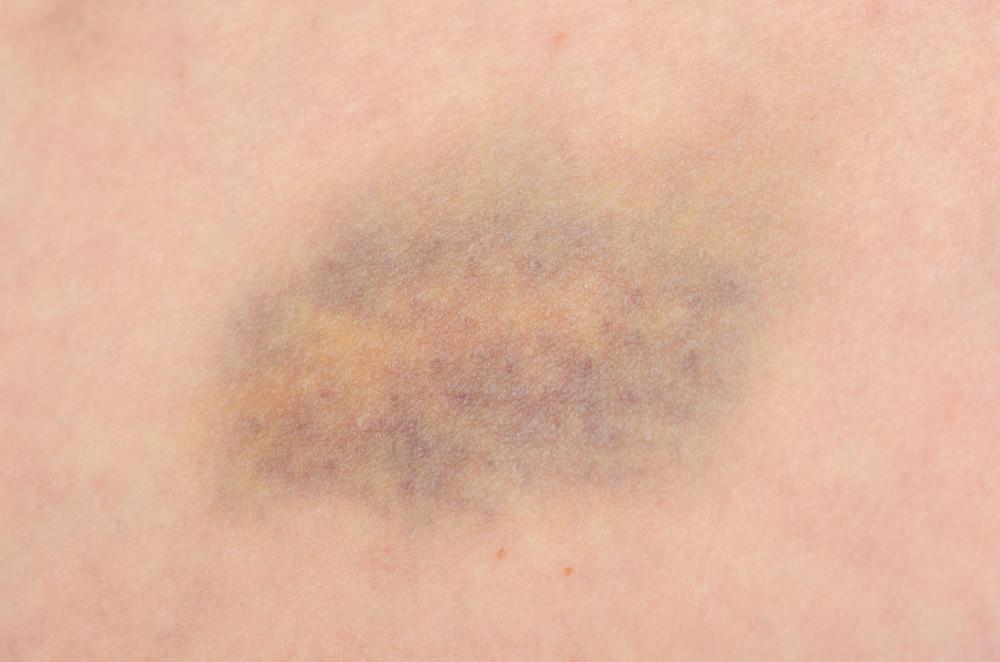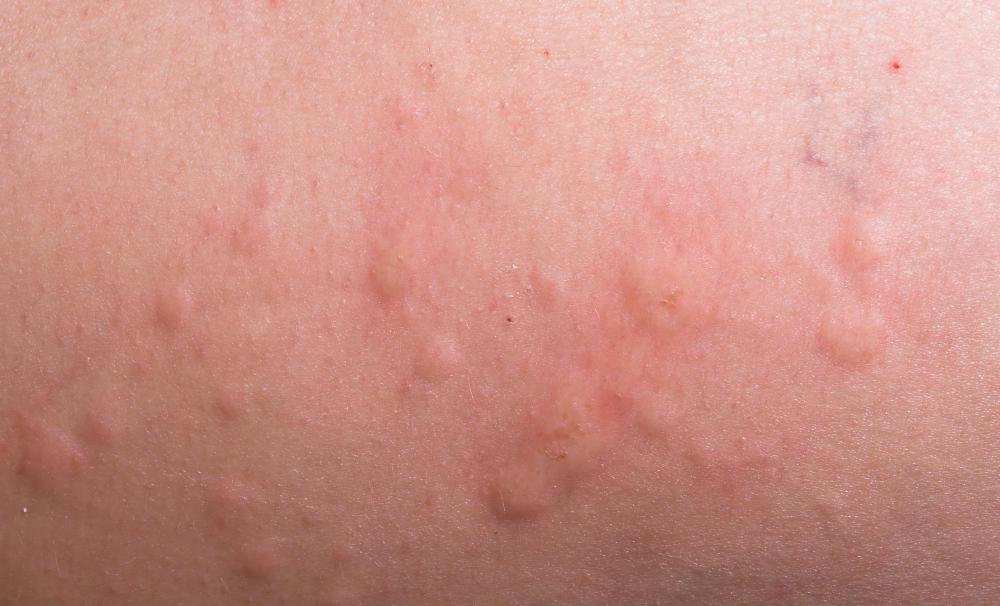At WiseGEEK, we're committed to delivering accurate, trustworthy information. Our expert-authored content is rigorously fact-checked and sourced from credible authorities. Discover how we uphold the highest standards in providing you with reliable knowledge.
What Are the Symptoms of Cutaneous Vasculitis?
Cutaneous vasculitis is a medical term used to describe a skin condition that is caused by blood vessel inflammation and that primarily affects the lower legs. Some of the most common symptoms of this disorder include the development of a rash, itching, and burning. Additional symptoms of cutaneous vasculitis may include bruising, hyperpigmentation, and skin ulcers. Arthritis, fever, and organ damage may occur if the skin disorder is part of a condition known as systemic vasculitis. A doctor should be consulted with any specific questions or concerns about the condition.
The rash associated with cutaneous vasculitis is often referred to as palpable purpura and is characterized by red or purple lesions that can be felt by the doctor upon examination. Urticaria, more commonly known as hives, causes raised red welts on the skin and is often the result of an allergic response to a food or environmental allergen. Itching is a frequently reported symptom of cutaneous vasculitis, and some people may also experience a painful burning sensation as a result of this disorder. Over the counter medication often provides sufficient relief from these symptoms, although prescription medication may sometimes become necessary.

Inflamed blood vessels, especially the small capillaries, may sometimes rupture or bleed underneath the skin, and this bleeding can lead to skin discoloration or bruising. While these symptoms are usually minor, extreme bruising should be reported to a doctor for further evaluation. Ulcers, or open sores, may sometimes develop and are usually caused by scratching due to intense itching. If left untreated, these lesions may become infected and require medical treatment such as topical or oral antibiotics. Over time, damage to the blood vessels may lead to a permanent darkening of the affected areas of skin, a symptom known as hyperpigmentation.

While cutaneous vasculitis can occur as an isolated condition, it is sometimes part of a larger disorder known as systemic vasculitis. In addition to the visible skin changes, symptoms such as joint pain, swelling, and fever may occur. Widespread inflammation of the blood vessels can lead to significant organ damage, occasionally requiring surgical intervention. Any potential symptoms of cutaneous vasculitis should be discussed with a medical professional so that the proper tests can be performed to determine the extent of damage to the blood vessels. A dermatologist, or doctor who specializes in the diagnosis and treatment of skin disorders, can create an individualized treatment plan based upon the specific needs of the patient.
AS FEATURED ON:
AS FEATURED ON:


















Discuss this Article
Post your comments